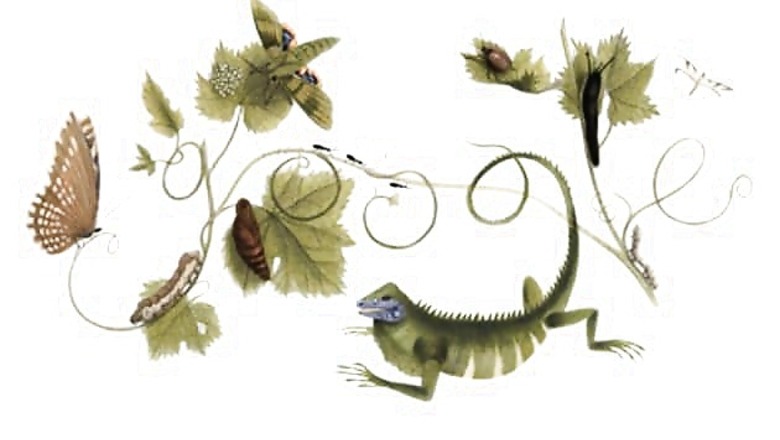
views
New Delhi: Celebrating the 366th birthday of naturalist and scientific illustrator Maria Sibylla Merian, Google has posted a doodle on its homepage. The Maria Sibylla Merian Google doodle features caterpillars, chrysalises, moths, butterflies and a green iguana in conjunction with the specific plants upon which they feed.
Born on April 2 1647 in Germany, Maria dedicated her life to the study and depiction of the metamorphosis of insects. She studied plants and insects and made elaborated paintings about them. Her detailed observations and documentation of the metamorphosis of the butterfly laid the foundation for modern entomology.
She was born into a family of artists and scholarly printers, Maria Sibylla was exposed to natural history publications at a young age. After her father's death, her mother married the still-life painter Jacob Marrel, who trained her as a flower painter. At the age of 13, Merian painted the transformation of silkworms into moths. This was the beginning of her passionate, first hand observation of insect metamorphosis that eventually led to her ground-breaking discoveries.
In 1665, she married, and later gave birth to two daughters, Johanna Helena and Dorothea Maria. After moving to Nuremberg, Merian continued her work studying the life cycle of caterpillars in the gardens of wealthy citizens. Merian's first publication, the New Book of Flowers (1675-80), a modelbook for embroidery and other handicrafts, conveys her ability to masterfully combine her background in publishing and flower painting.
In her second publication, Caterpillars: their Wondrous Transformation and Peculiar Nourishment from Flowers (1679-1683), Merian presented the various stages of different species' development along with the plants they consumed.
In 1686, she moved to a pietistic religious community in Friesland (the Netherlands) with her mother and daughters, leaving be hind her husband-whom she ultimately divorced in the 1690s. While living in Friesland, she resided in the home of the governor of the Dutch colony of Suriname, where she studied South American tropical specimens.
After the financial collapse of the community in 1691, she moved to Amsterdam and her work attracted international attention of scholars and collectors. In 1699, Merian sold most of her belongings in order to travel to Suriname with her younger daughter, Dorothea Maria. They remained in Suriname for nearly two years-collecting specimens and making watercoulors of the exotic animals and plants-before poor health forced her to return to the Netherlands.
Maria Sibylla Merian died in Amsterdam on January 13 1717. She was 69. Merian's work left an indelible impact on the field of entomology. Her meticulous illustrations of caterpillars' life cycles and feeding patterns accompanied by a concise text helped disprove the commonly held belief that insects reproduced by spontaneous generation of decaying matter such as old meat and rotten fruit. Her Suri name Book contains some of the most stupendous and colourful images of nature ever created.












Comments
0 comment